The Software-as-a-Service (SaaS) landscape is on the brink of a paradigm shift. By 2025, AI agents—powered by cutting-edge technologies like Google Gemini 2.0 and OpenAI GPT-4 Turbo—will disrupt SaaS in unprecedented ways.
Listen to the audio version, crafted with Gemini 2.0.
These agents will revolutionize how SaaS platforms deliver value, interact with users, and optimize workflows. As autonomous systems, AI agents offer unparalleled capabilities for reasoning, adapting, and personalizing user experiences, marking a significant shift in the SaaS ecosystem.
In this article, we explore how AI agents will disrupt SaaS in 2025, diving into their technical foundations, evolving human-agent interfaces, real-world applications, and the future of AI-driven innovation.
What Are AI Agents?
AI agents are advanced, autonomous programs designed to perform specific tasks with minimal human intervention. Unlike traditional automation systems, they are context-aware, goal-driven, and capable of dynamic adaptation.
Key Capabilities of Gemini 2.0 and GPT-4 Turbo
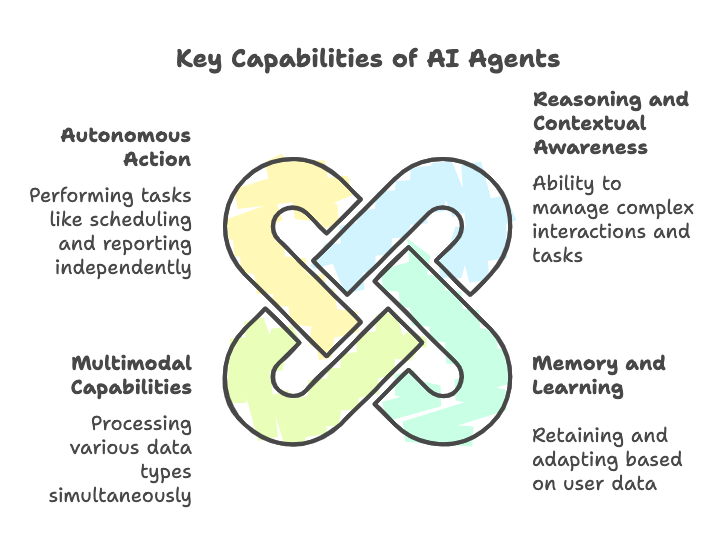
- Reasoning and Contextual Awareness
- Handle multi-turn interactions.
- Solve complex problems, such as cross-departmental task management.
- Memory and Learning
- Retain context over time, enabling personalized recommendations.
- Adapt based on user interactions and historical data.
- Multimodal Capabilities
- Gemini 2.0 processes text, images, and other data types simultaneously.
- Example: SaaS platforms for design integrate image-based inputs with textual instructions for seamless prototyping.
- Autonomous Action
- Schedule meetings, trigger workflows, and generate reports autonomously.
How Human-Agent Interfaces Will Evolve
For AI agents to succeed, Human-Agent Interfaces (HAIs) must enable seamless, intuitive collaboration between users and AI systems. Here’s how HAIs will evolve:
1. Conversational Interfaces
AI agents will leverage advanced conversational capabilities to interact naturally with users.
- Example: Users can ask, “What were last quarter’s top-performing sales regions?” and receive actionable insights instantly.
- Advancements:
- Context retention for multi-step queries.
- Emotion recognition to tailor responses.
2. Proactive Agents
Agents will anticipate user needs based on behavioral patterns and historical data.
- Example: A project management agent flags a potential deadline risk and suggests reallocating resources.
3. Personalized Dashboards
AI agents will dynamically adapt SaaS interfaces based on user roles and preferences:
- Managers: High-level overviews.
- Developers: Detailed task breakdowns.
4. Decentralized Access
AI agents will integrate across ecosystems, allowing users to interact with SaaS functionality directly within tools like Slack or Microsoft Teams.
5. Emerging Interfaces
- Voice Interfaces: Enable hands-free operations in SaaS.
- Augmented Reality (AR): Visualize complex workflows, such as supply chain models, in 3D.
- Brain-Computer Interfaces: Direct neural inputs for faster interaction.
Anatomy of an AI Agent
A robust AI agent requires multiple components working in harmony:
- Foundation Model
The computational core (e.g., Gemini 2.0, GPT-4 Turbo) powers understanding and decision-making. - System Prompt
Governs the agent’s goals and response structure. - Retrieval-Augmented Generation (RAG)
Combines real-time data retrieval with generative capabilities.- Example: A SaaS financial tool retrieves live market data to generate personalized investment strategies.
- Toolkit
Executes specific actions, such as:- Integrating with APIs.
- Automating email campaigns.
- Generating compliance reports.
- Orchestrator
Manages multi-agent workflows, ensuring coherent collaboration.- Example: In customer support, one agent handles FAQs while another escalates complex queries.
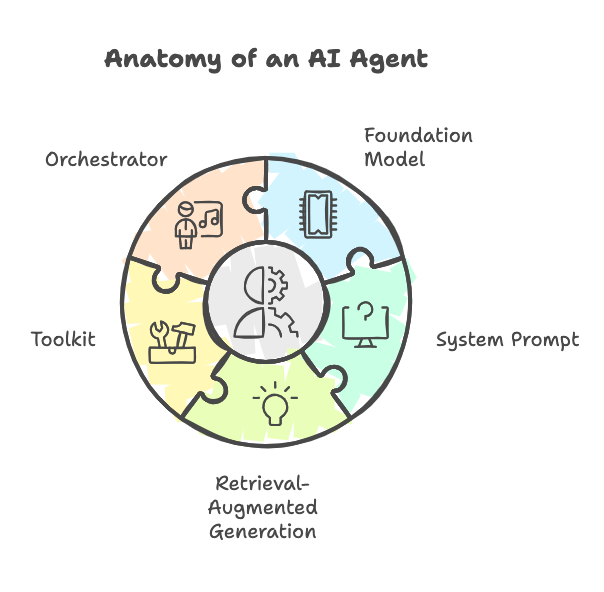
Platforms and Tools Enabling AI Agents
1. Google Gemini 2.0
Excels in multimodal tasks, making it ideal for SaaS platforms requiring visual and textual processing.
- Example: Automating content curation based on trending topics.
2. OpenAI GPT-4 Turbo
Optimized for cost-effective deployment of conversational agents.
- Example: A chatbot that assists HR teams with candidate screening.
3. AutoGen
Simplifies multi-agent orchestration with low-code/no-code tools.
- Example: Automating end-to-end SaaS workflows for startups.
4. LangChain
Provides developers with frameworks to create custom AI applications for SaaS.
- Example: Designing an agent that integrates marketing and sales platforms.
Multi-Agent Systems: A New Collaborative Model
Single-Agent Systems
- Task-specific with limited flexibility.
- Often require human feedback to improve.
Multi-Agent Systems
Networks of specialized agents collaborate autonomously:
- Example:
- Agent A forecasts demand.
- Agent B adjusts inventory orders.
- Agent C updates stakeholders.
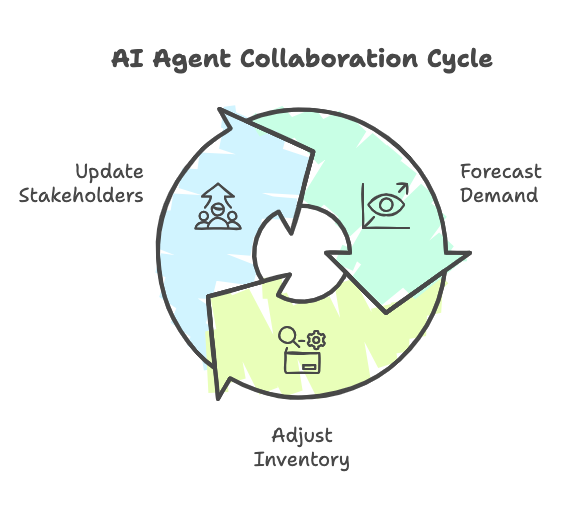
Challenges
- Coordination: Preventing conflicts between agents.
- Resource Allocation: Ensuring scalability for large workflows.
- Debugging: Troubleshooting misaligned agent actions.
Real-World Applications of AI Agents
Customer Support
AI agents resolve FAQs, escalate critical tickets, and provide 24/7 service.
Sales Automation
- Predict customer needs using AI-driven analytics.
- Schedule follow-ups autonomously.
Project Management
- Optimize resource allocation.
- Predict bottlenecks in real time.
Case Study:
A SaaS platform reduced operational costs by 40% by deploying multi-agent systems to automate customer engagement.
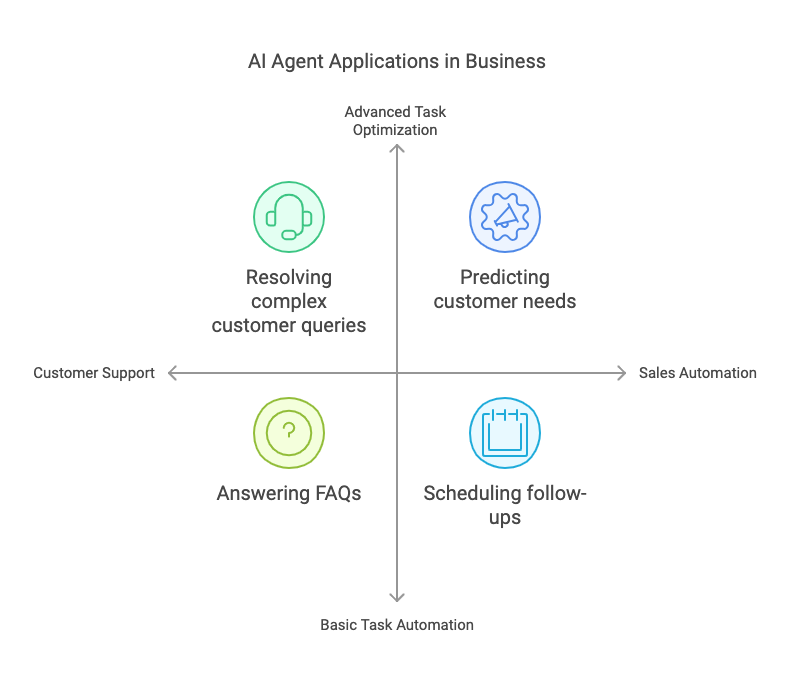
Addressing Challenges
1. Ethical Considerations
- Bias: AI agents must avoid perpetuating biases in hiring or lending decisions.
- Transparency: Explainable AI is critical for user trust.
2. Security and Privacy
Robust encryption and compliance frameworks (e.g., GDPR) are non-negotiable.
3. Integration Complexity
- Legacy systems require API modernization.
- Change management strategies are essential for successful adoption.
The Future of AI Agents in SaaS
- Quantum Computing: Enables faster, more complex decision-making.
- Neuromorphic Chips: Increase energy efficiency for always-on AI agents.
- No-Code Platforms: Democratize AI development by reducing the barrier to entry.
- Human-Agent Synergy: Collaborative models where humans guide and refine agent actions.
Data and Trends
- SaaS Market Growth: AI-powered SaaS expected to grow at a CAGR of 25.6%, reaching $80 billion by 2025.
- Efficiency Gains: Businesses report up to a 50% reduction in manual tasks.
- Adoption Rates: Over 70% of SaaS providers plan to integrate AI agents.
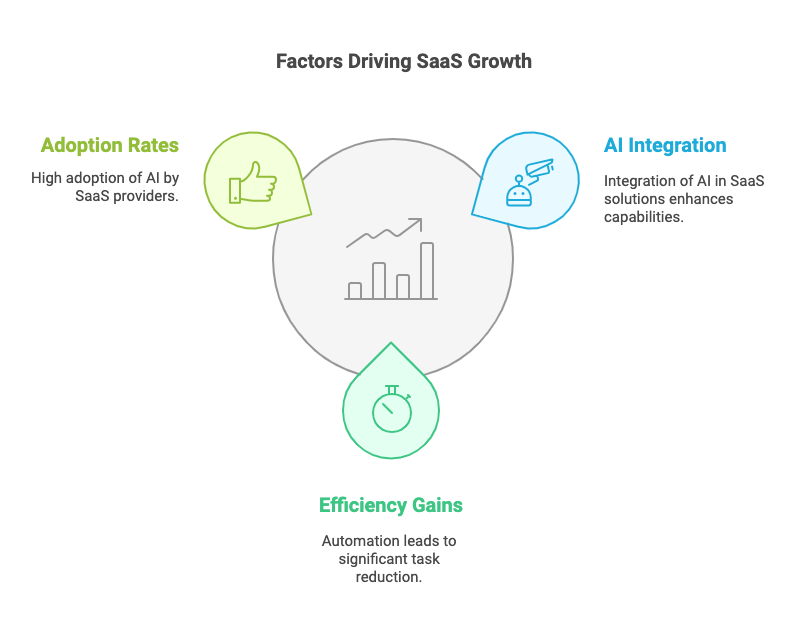
Conclusion: Preparing for the AI Revolution in SaaS
AI agents are no longer a futuristic concept—they are the driving force behind SaaS innovation. As Gemini 2.0, GPT-4 Turbo, and other technologies continue to advance, businesses must embrace these intelligent systems to stay competitive. By adopting AI agents, companies can achieve unparalleled efficiency, personalization, and scalability.
The SaaS revolution is here. Are you ready?
Read more
- AI Trends and Market Analysis:
Gartner’s AI Trends Report for SaaS
This link provides readers with additional context about how AI is shaping SaaS.
Key Capabilities of Gemini 2.0 and GPT-4 Turbo
- Google Gemini 2.0 Announcement:
Gemini 2.0: Redefining AI
Direct readers to Google’s official blog for a deeper understanding of Gemini’s capabilities. - OpenAI GPT-4 Turbo Documentation:
OpenAI GPT-4 Turbo
A detailed description of GPT-4 Turbo’s features and use cases.
Anatomy of an AI Agent
- Retrieval-Augmented Generation (RAG):
Microsoft Research on RAG
An authoritative resource explaining how RAG enhances AI systems.
How Human-Agent Interfaces Will Evolve
- Conversational AI in SaaS:
The Future of Conversational AI
A resource for exploring the advancements in conversational AI interfaces. - Augmented Reality in SaaS Applications:
AR Trends for SaaS
A technical overview of how AR is integrating into enterprise SaaS platforms.
Platforms and Tools Enabling AI Agents
- LangChain Documentation:
LangChain for AI Developers
Official LangChain documentation explaining how it helps build AI-powered applications. - Microsoft AutoGen Framework:
AutoGen Multi-Agent Framework
A GitHub repository detailing how AutoGen simplifies multi-agent orchestration.
Challenges in Deploying AI Agents
- AI Ethics and Bias in Decision-Making:
AI Ethics Toolkit
A comprehensive guide from IBM on addressing bias and ethical concerns in AI. - Data Privacy Compliance:
GDPR Compliance for AI Applications
Essential information for adhering to GDPR standards in AI-powered SaaS platforms.
Real-World Applications of AI Agents
- Case Study on Multi-Agent Systems:
AI Agents in CRM: A Salesforce Case Study
An in-depth example of how multi-agent systems improve SaaS CRMs.
Future Trends in AI Agents
- Quantum Computing for AI:
Quantum AI Research by Google
Insights into how quantum computing will influence AI agent capabilities. - No-Code AI Platforms:
The Rise of No-Code AI
An analysis of how no-code platforms democratize AI development.
Explore More
- AI Services: Explore our AI services for more details.
- Digital Product Development: Discover our digital product development expertise.
- Design Innovation: Learn about our design innovation approach.





Leave a Reply